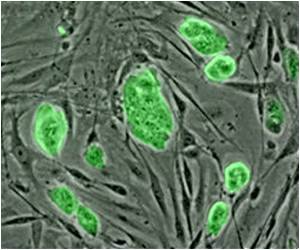A new study has found why DNA shuts down its repair process during cell division

Throughout most of a cell's life, corrective mechanisms are nearly always acting to repair DNA strand breaks quickly and accurately. "DNA repair helps thwart cancer and keep the cell in top shape – it is usually all in a day's work within each cell," Dr. Durocher adds.
Paradoxically, the exception is at the very moment when chromosomes are most vulnerable, when they physically separate into two cells at cell division (mitosis).
Telomeres fuse if repair is forced
"A cell replicating its DNA is like making a back-up copy of your hard drive," suggests lead author Dr. Alexandre Orthwein. "You want the copy to be exactly like the original, and you don't want any errors to creep in during the copying process." Dr. Orthwein is completing a post-doctoral fellowship in the Durocher lab.
Dr. Durocher and his team worked backwards. First, they determined how repair proteins failed to recognize and act on chromosome breaks during cell division. Next, they modified the repair proteins in order to impose DNA repair during mitosis, and watched what happened.
Advertisement
"In other words, at that moment of cell division, the cell miss-identified its own telomeres as damaged DNA, which it then 'repaired," Dr. Orthwein says.
Advertisement
The finding shows that cells have a difficult choice to make during this vulnerable period of cell division, adds Dr. Orthwein. "They take the drastic action of turning off DNA repair, a process that is usually highly beneficial, to prevent chromosomes from fusing with each other by mistake."
"We often assume that we know all the principles that guide basic processes like how cells divide," says Dr. Jim Woodgett, Director of the Lunenfeld-Tanenbaum Research Institute. "But there is still so much to discover and this is a wonderful example of how an old conundrum was resolved by asking the right questions."
Can this new knowledge be exploited therapeutically? Dr. Durocher adds that, "Some chemotherapy drugs such as paclitaxel work by stopping cell division. Theoretically, it may be possible to enhance the efficacy of these drugs based on our findings, but if so it's in the future."
Source-Eurekalert













